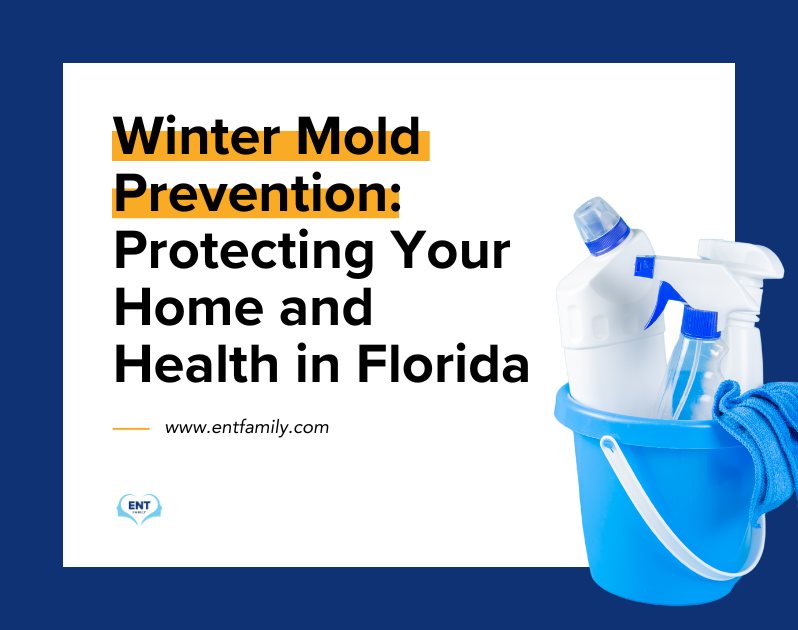Winter Allergies or Just a Cold? Here’s How to Tell
- Von Vergara
- Oct 13
- 4 min read
Updated: Oct 14

Cold weather doesn’t mean you’re safe from allergies. Indoor triggers like dust mites, mold, and pet dander often flare up in winter and can mimic cold symptoms. Knowing the key differences helps you get the right care faster..
Quick comparison
Symptom | Winter Allergies | Cold / Viral Infection |
Nasal discharge | Clear, watery | Thick, yellow/green (after a few days) |
Fever | Rare | Common (with flu/viral illnesses) |
Duration | Weeks–months (while exposed) | Shorter (5–10 days) |
Sneezing / itchy eyes | Common | Rare |
Onset | Often with exposure or seasonally recurrent | Gradual after contact with sick person |
Response to antihistamines | Often improves | Little or no effect |
Not sure which one you have? An ENT can run allergy tests or check for sinus issues so you can get lasting relief.
Why winter triggers allergies (even when it’s cold)
Indoor allergens increase: People spend more time indoors, so exposure to dust mites, pet dander, and indoor mold rises.
Humidity shifts: In many climates (including Florida), seasonal humidity and fallen leaves create more mold spores.
Heating and air-conditioning: Both can circulate allergens and dry mucosal linings, worsening symptoms.These conditions make winter allergy symptoms persistent for sensitive individuals.
Key clues that point to allergies (vs. a cold)
Itchy eyes, nose, or throat — classic for allergies.
Symptoms that persist or recur whenever you’re in the same environment (home, office) — suggests an environmental trigger.
Clear nasal discharge that won’t resolve and improvement with antihistamines or intranasal steroid sprays.
No systemic symptoms (high fever, severe body aches) — less likely to be a viral illness.
Treatment Options & Prevention
Treatment depends on the cause—your ENT may recommend:
Hydration and humidifiers to relieve dryness
Allergy management or sinus treatment for postnasal drip
Acid reflux medication or lifestyle changes for GERD-related irritation
Antibiotics for bacterial infections
Tonsillectomy in chronic tonsillitis cases
Simple preventive measures also help—like staying hydrated, avoiding smoke exposure, and washing your hands frequently during cold and flu season.
When it’s likely a cold or other infection
Sudden onset with fever, body aches, sore throat or when you’ve been exposed to someone who’s sick — viral infection is likely.
Discolored nasal drainage (yellow/green) emerging after day 3–4 may indicate an infection or secondary bacterial sinusitis.
Symptoms resolving in 7–10 days follow the expected course for most uncomplicated colds.
What tests and exams can help
Allergy testing (skin prick or blood IgE tests) to identify specific triggers.
Nasal endoscopy and exam by an ENT if congestion, facial pain, or drainage suggests sinus disease.
Sinus imaging (CT) only when chronic or complicated sinusitis is suspected.
Rapid strep or other tests are used when bacterial throat infection is suspected.
Treatment options (quick guide)
For winter allergies
Intranasal corticosteroid sprays — first-line for moderate to severe symptoms.
Oral antihistamines (non-sedating) for sneezing/itch.
Saline nasal rinses and HEPA filters to reduce allergen load.
Allergy immunotherapy (shots or sublingual tablets) for long-term control when meds aren’t enough.
For common colds / viral infections
Rest, hydration, saline sprays, and symptomatic care.
Antivirals only when indicated (e.g., influenza early in illness).
Antibiotics are reserved for confirmed bacterial sinusitis or other bacterial complications.
When sinus infection is chronic or recurrent, ENT options include medical optimization and, if needed, minimally invasive sinus procedures. When to see an ENT
Book an ENT consult if you have any of the following:
Symptoms lasting more than 10–14 days or recurring each season.
Severe facial pain, high fever, or persistent thick nasal discharge.
Symptoms not improving with standard OTC allergy meds or nasal steroid sprays.
Frequent sinus infections, sleep disruption, or reduced sense of smell.
An ENT specialist can confirm whether allergies, sinus disease, or another problem is causing your symptoms and create a targeted treatment plan. Prevention & practical tips (winter-ready)
Run a HEPA air purifier in frequently used rooms.
Wash bedding weekly in hot water to reduce dust mites.
Use saline nasal rinses daily during high-exposure periods.
Keep windows closed on high-pollen or windy days.
Consider allergy testing if OTC meds provide only partial relief.
Related Posts You May Find Helpful
These resources are reviewed by ENT specialists and backed by trusted medical research, helping you make informed decisions about your ear, nose, and throat health.
Schedule a Consultation with an ENT Specialist
If you’re unsure whether it’s allergies or a cold—or if your symptoms have lasted longer than expected—our ENT team can help. We offer allergy testing, individualized treatment plans, and advanced sinus care.
Address: 3911 Hollywood Blvd#201, Hollywood, FL 33021, United States
Phone: 754-888-1368
Email: info@entfamily.com
References
American College of Allergy, Asthma & Immunology (ACAAI). Allergic Rhinitis (Hay Fever). https://acaai.org/allergies/types/hay-fever-rhinitis/
Mayo Clinic. Allergies — Symptoms and Causes. https://www.mayoclinic.org/diseases-conditions/allergies/symptoms-causes/syc-20351497
Centers for Disease Control and Prevention (CDC). Common Cold — Prevention & Treatment. https://www.cdc.gov/antibiotic-use/community/for-patients/common-illnesses/colds.html
American Academy of Otolaryngology–Head and Neck Surgery (AAO-HNS). Adult Sinusitis (Clinical Practice Guidance). https://www.entnet.org/resource/adult-sinusitis/
%20(2).png)





.png)
Comments